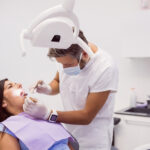The Ultimate Guide to Beard Hair Transplant to Scalp
Introduction
Beard hair transplant, once a niche procedure, has gained immense popularity in recent years. As more men seek to enhance their facial hair, whether due to genetics, scarring, or other reasons, beard hair transplant to scalp procedures have become a viable solution. This comprehensive guide aims to shed light on everything you need to know about beard hair transplant to scalp, from the procedure itself to recovery and expected results.
Introduction to Beard Hair Transplant to scalp
Beard hair transplant to scalp involves the extraction of hair follicles from a donor area, typically the back of the scalp, and their transplantation to the beard region. The primary goal is to achieve a fuller, more aesthetically pleasing beard. With the rise of the beard trend in recent years, fueled by fashion and cultural influences, more men are considering this procedure to attain their desired look.
Understanding Beard Hair Transplant to scalp Procedure
Consultation and Assessment
Before undergoing a beard hair transplant, individuals must consult with a qualified surgeon. During this consultation, the surgeon assesses the patient’s eligibility for the procedure and discusses their expectations and desired outcome.
Donor Site Selection
The donor site, usually the back of the scalp, is carefully selected to ensure an adequate supply of healthy hair follicles. The density and quality of hair in the donor area play a crucial role in determining the success of the transplant.
Extraction Technique: FUE vs. FUT
Two primary extraction techniques are used in beard hair transplant: Follicular Unit Extraction (FUE) and Follicular Unit Transplantation (FUT). FUE involves the individual extraction of hair follicles, while FUT involves the removal of a strip of tissue containing hair follicles.
Recipient Site Preparation
Before transplanting the extracted follicles, the recipient site on the beard area is prepared. This involves creating tiny incisions where the grafts will be placed, ensuring proper alignment and density.
Factors to Consider Before Opting for Beard Hair Transplant
Candidate Eligibility
Not everyone is a suitable candidate for beard hair transplant. Factors such as overall health, hair loss pattern, and skin condition must be taken into account before proceeding with the procedure.
Expectations vs. Reality
It’s essential for individuals considering beard hair transplant to scalp to have realistic expectations regarding the outcome. While the procedure can significantly enhance facial hair appearance, it may not always achieve perfection.
Risks and Complications
Like any surgical procedure, beard hair transplant to scalp carries certain risks, including infection, scarring, and uneven growth. Understanding these risks and discussing them with the surgeon is crucial before making a decision.
Preparing for a Beard Hair Transplant
Pre-Surgery Instructions
Patients are typically provided with pre-surgery instructions to follow, which may include avoiding certain medications and alcohol, as well as maintaining a healthy lifestyle to optimize the success of the procedure.
Lifestyle Adjustments
In the days leading up to the transplant, individuals may need to make temporary lifestyle adjustments, such as refraining from smoking and avoiding strenuous physical activity, to promote optimal healing.
The Beard Hair Transplant to Scalp Procedure: Step-by-Step
Anesthesia
Before the procedure begins, local anesthesia is administered to the donor and recipient areas to ensure the patient’s comfort throughout the process.
Extraction of Grafts
Using the chosen extraction technique, either FUE or FUT, the surgeon carefully harvests hair follicles from the donor site, preserving their integrity and viability.
Recipient Site Creation
Once the grafts are extracted, the surgeon creates tiny incisions in the recipient site according to the desired beard shape and density, taking into account the natural hair growth pattern.
Graft Placement
The harvested follicles are then meticulously placed into the recipient incisions, ensuring proper orientation and alignment to achieve a natural-looking beard.
Recovery and Aftercare Tips
Post-Operative Instructions
Following the transplant, patients receive detailed post-operative instructions, including guidelines for cleaning the transplant area, taking prescribed medications, and avoiding activities that may disrupt the healing process.
Managing Discomfort and Swelling
It’s normal to experience some discomfort and swelling in the days following the transplant. Patients can manage these symptoms with pain medication and by applying cold compresses to the treated area.
Long-Term Care for Transplanted Hair
As the transplanted hair begins to grow, patients should follow a gentle hair care routine, avoiding harsh chemicals and excessive styling to ensure the longevity of the results.
Expected Results and Timeline
Initial Growth Phase
In the weeks following the transplant, patients will notice the initial growth of transplanted hair. However, it’s essential to be patient, as the full results may take several months to become apparent.
Full Results and Density
Over time, the transplanted hair will continue to grow and mature, eventually achieving its full density and thickness. Most patients can expect to see significant improvement in their beard appearance within six to twelve months post-transplant.
Finding the Right Surgeon for Beard Hair Transplant
Qualifications and Experience
When choosing a surgeon for beard hair transplant, it’s essential to consider their qualifications, experience, and track record of successful procedures. Board-certified plastic surgeons with specialized training in hair restoration are often the best choice.
Patient Reviews and Testimonials
Reading patient reviews and testimonials can provide valuable insight into the quality of care and results offered by a particular surgeon or clinic. Additionally, scheduling a consultation allows patients to discuss their concerns and expectations directly with the surgeon.
Conclusion
Beard hair transplant to scalp offers a safe and effective solution for men seeking to enhance their facial hair appearance. By understanding the procedure, risks, and expected outcomes, individuals can make informed decisions about whether beard hair transplant to scalp is right for them.











